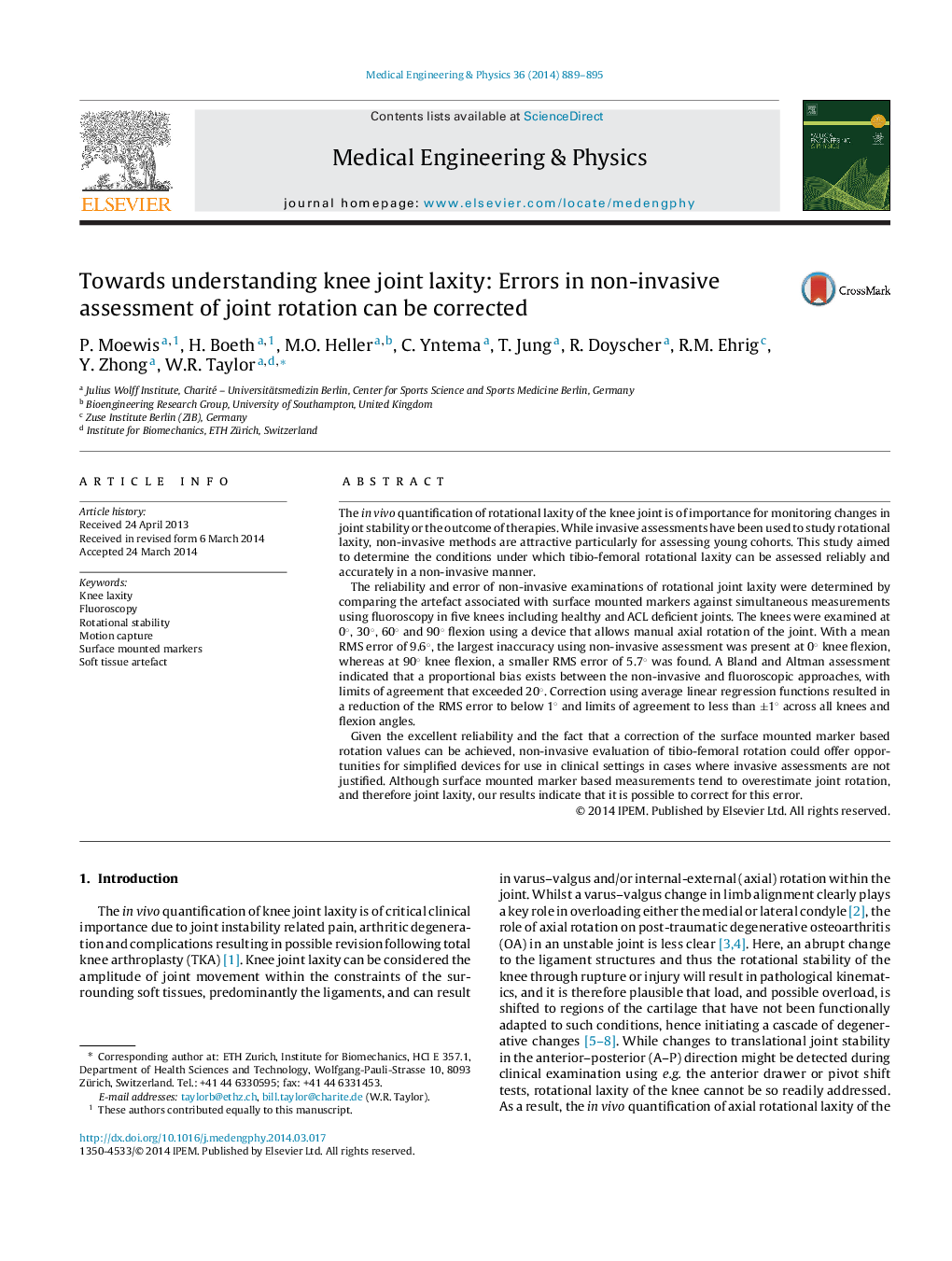| کد مقاله | کد نشریه | سال انتشار | مقاله انگلیسی | نسخه تمام متن |
|---|---|---|---|---|
| 875879 | 910813 | 2014 | 7 صفحه PDF | دانلود رایگان |
The in vivo quantification of rotational laxity of the knee joint is of importance for monitoring changes in joint stability or the outcome of therapies. While invasive assessments have been used to study rotational laxity, non-invasive methods are attractive particularly for assessing young cohorts. This study aimed to determine the conditions under which tibio-femoral rotational laxity can be assessed reliably and accurately in a non-invasive manner.The reliability and error of non-invasive examinations of rotational joint laxity were determined by comparing the artefact associated with surface mounted markers against simultaneous measurements using fluoroscopy in five knees including healthy and ACL deficient joints. The knees were examined at 0°, 30°, 60° and 90° flexion using a device that allows manual axial rotation of the joint. With a mean RMS error of 9.6°, the largest inaccuracy using non-invasive assessment was present at 0° knee flexion, whereas at 90° knee flexion, a smaller RMS error of 5.7° was found. A Bland and Altman assessment indicated that a proportional bias exists between the non-invasive and fluoroscopic approaches, with limits of agreement that exceeded 20°. Correction using average linear regression functions resulted in a reduction of the RMS error to below 1° and limits of agreement to less than ±1° across all knees and flexion angles.Given the excellent reliability and the fact that a correction of the surface mounted marker based rotation values can be achieved, non-invasive evaluation of tibio-femoral rotation could offer opportunities for simplified devices for use in clinical settings in cases where invasive assessments are not justified. Although surface mounted marker based measurements tend to overestimate joint rotation, and therefore joint laxity, our results indicate that it is possible to correct for this error.
Journal: Medical Engineering & Physics - Volume 36, Issue 7, July 2014, Pages 889–895
